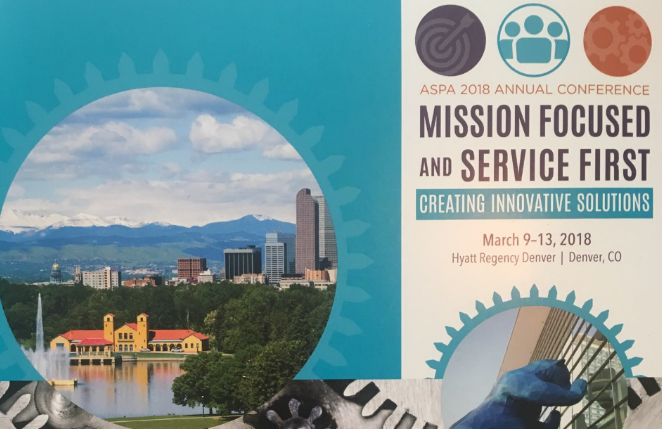Dear IGGI Community:
On March 13 of 2018, IGGI’s Dr. Le delivered a talk about “Medical Ethics, Respect for Persons and Conflicts of Interest” at the annual meeting for the American Society for Public Administration (ASPA) in Denver, Colorado. Dr. Le highlighted evolutions in policy on informed consent, financial conflicts of interest for medical school faculty and other researchers, as well as challenges to pragmatic oversight approaches and our current interpretations of the law.
Although substantial violations of respect for persons are reported prominently in the media, loopholes regarding financial conflicts of interest are pervasive. According to Dr. Art Caplan, professor of bioethics at the University of Pennsylvania[1],
“It’s a wild, wild West out there in tissue land, with few sheriffs and a lot of shady characters meeting in the back rooms.”
For example, Pro Publica reported in 2014 that many leaders of teaching hospitals had close ties to drug companies, which pose significant financial conflicts of interest for doctors treating patients with pharmaceuticals [2].
New technologies will complicate oversight further. Although promising, some of these technologies are difficult to detect when abused. For example, consider that advances in nano technologies are becoming increasingly small (the size of a grain of sand [3]), pervasive (many are designed to monitor the human brain [4]), and wireless (signaling and data capture without wires [5]). How prepared are we to conduct oversight given potential abuses?
A copy of the presentation is available directly from the American Society for Public Administration here.
Alternatively, see the PowerPoint from this talk imbedded below.
Source for image: IGGI photo of part of the conference program cover page (c) ASPA 2018
References
1] Jablon, Robert (March 11, 2004), “Scandal at UCLA reveals cadaver trade as big business: Unregulated system cited by specialists,” The Boston Globe. Available at http://archive.boston.com/news/science/articles/2004/03/11/scandal_at_ucla_reveals_cadaver_trade_as_big_business/
[2] Ornstein, Charles (April 1, 2014), “Dollars for Doctors: Leaders of Teaching Hospitals Have Close Ties to Drug Companies, Study Shows,” Propublica.org. Available at https://www.propublica.org/article/leaders-of-teaching-hospitals-have-close-ties-to-drug-companies-study-shows [3] MacRae-Crerar, Aurora Aug 12, 2016, “Scientists Build Implantable Bio-Sensor Size of Sand Grain.” Available at https://www.kqed.org/futureofyou/221882/scientists-build-implantable-bio-sensor-size-of-sand-grain-video [4] Lawrence Livermore Laboratory, (July 8, 2014), “DARPA taps Lawrence Livermore to develop world’s first neural device to restore memory”Available at https://www.llnl.gov/news/darpa-taps-lawrence-livermore-develop-worlds-first-neural-device-restore-memory. See also Campbell, Don (Feb 22, 2018), “Do you see what I see? Researchers harness brain waves to reconstruct images of what we perceive?” Available at https://utsc.utoronto.ca/news-events/breaking-research/do-you-see-what-i-see-researchers-harness-brain-waves-reconstruct-images-what-we [5] National Institutes of Health (July 16, 2015), “Futuristic brain probe allows for wireless control of neurons.” Available at https://www.nih.gov/news-events/news-releases/futuristic-brain-probe-allows-wireless-control-neurons

